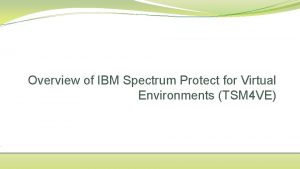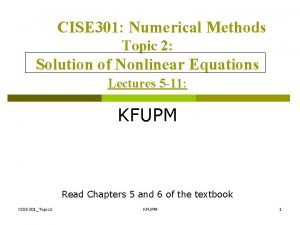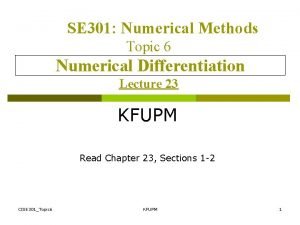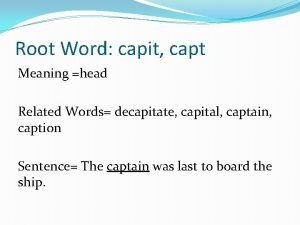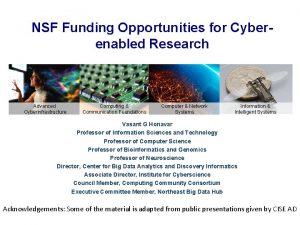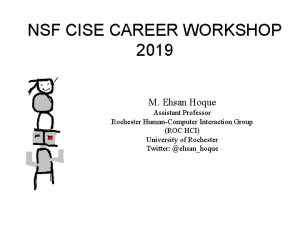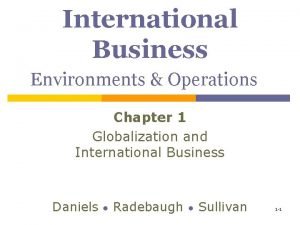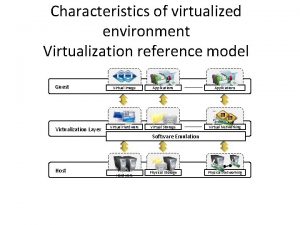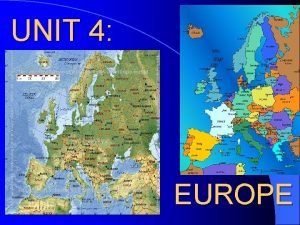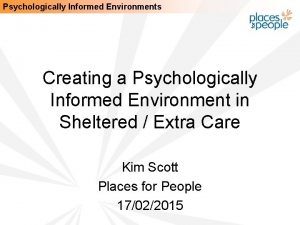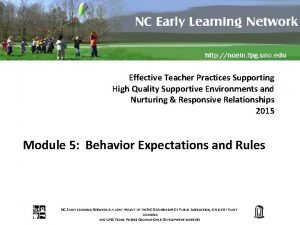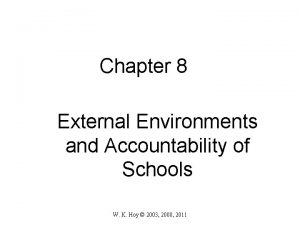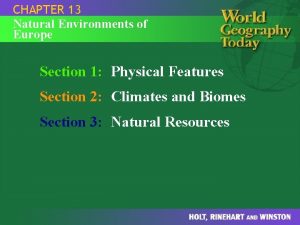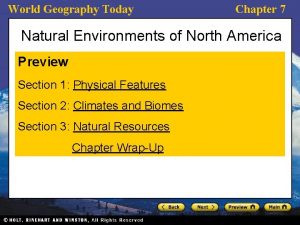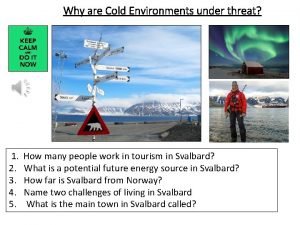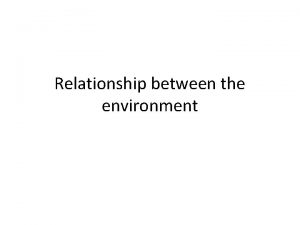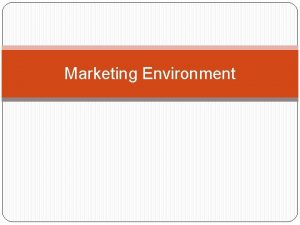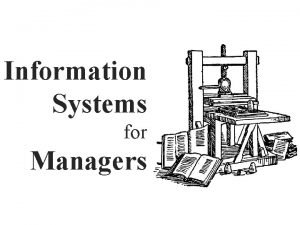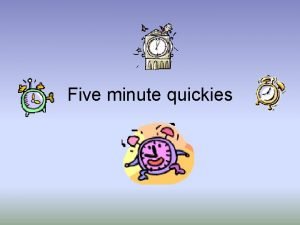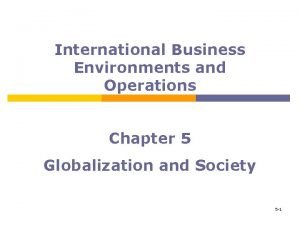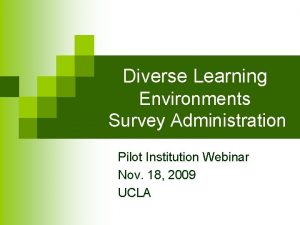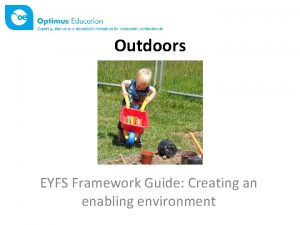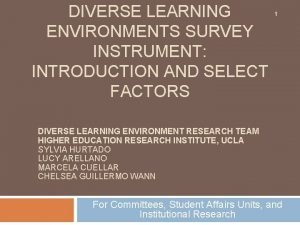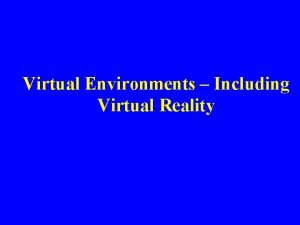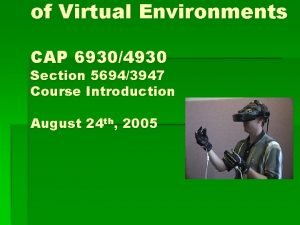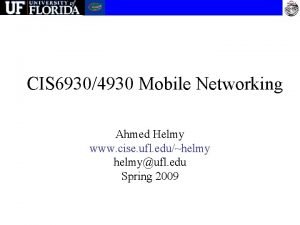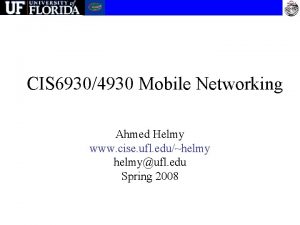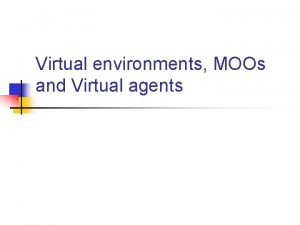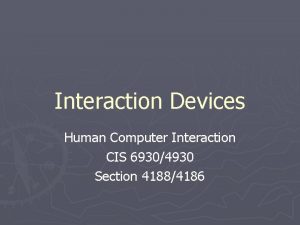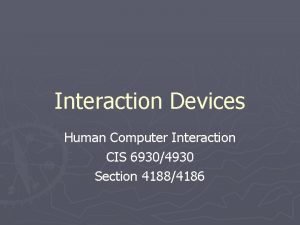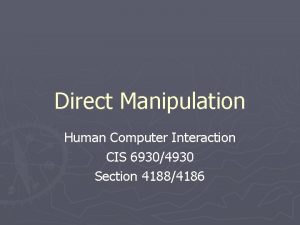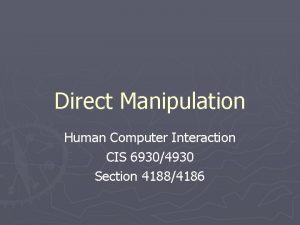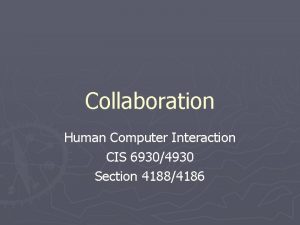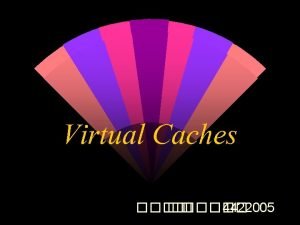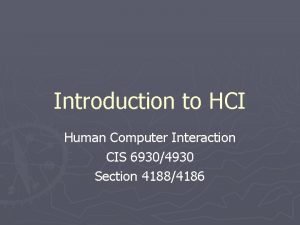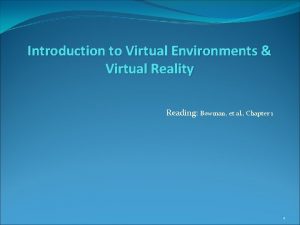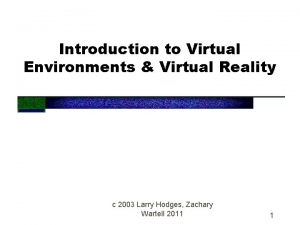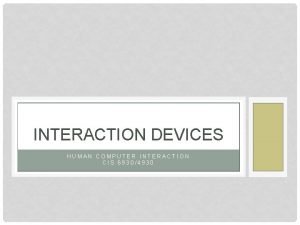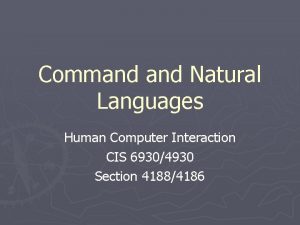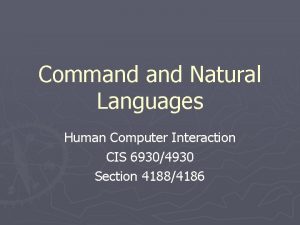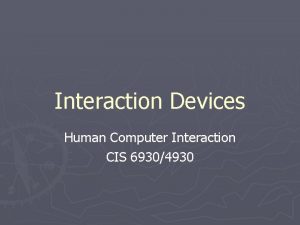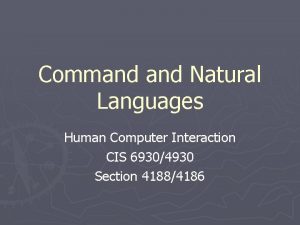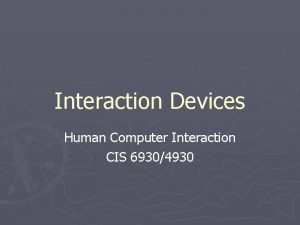Introduction to Virtual Environments CISE 69304930 Section 65893146





































- Slides: 37

Introduction to Virtual Environments CISE 6930/4930 Section 6589/3146 Benjamin Lok Fall 2003 1

Virtual Reality Definition What is virtual reality? n Virtual – being in essence or effect, but not in fact Example VRAM n Reality – the state or quality of being real. Something that exists independently of ideas concerning it. Something that constitutes a real or actual thing as distinguished from something that is merely apparent. ” n What was the first VR? 2

What was the first VR? 3

Progression Story telling n What did this rely on? User’s imagination! Multi-sensory n n Images Sounds Control n n Events View What do these things have in common? n Immersion 4

Define VR Take a few minutes and write a 1 -2 sentence definition. n What are the important components? Burdea: Virtual reality is a high-end user-computer interface that involves real-time simulation and interactions through multiple sensorial channels. These sensorial modalities are visual, auditory, tactile, smell, and taste. 5

Burdea’s 3 I’s of VR Interactivity – user impacts world n n Define Channels Immersion – believing you are there n n Define What contributes to it? Imagination – user ‘buying’ into the experience n n Examples Why is this necessary? 6

Ivan Sutherland’s The Ultimate Display “Don’t think of that thing as a screen, think of it as a window, a window through which one looks into a virtual world. The challenge to computer graphics is to make that virtual world look real, sound real, move and respond to interaction in real time, and even feel real. ” 7

Our definition (from Brooks’ What’s Real About Virtual Reality) Virtual Reality Experience – the user is effectively immersed in a responsive virtual world. Implies -> user dynamic control of viewpoint Control becomes an important element of VR systems. n n Differentiates VR from books and movies (or watching movies in HMD) Why is control more important? 8

Key Elements of Virtual Reality Experience Virtual World - content of a given medium n n screen play, script, etc. actors performing the play allows us to experience the virtual world Immersion – sensation of being in an environment n n n mental immersion – suspension of disbelief physical immersion – bodily entering the medium Related to presence – (mentally immersed) the participant’s sensation of being in the virtual environment (Slater) Walking Experiment at UNC – Chapel Hill 9

Key Elements of Virtual Reality Experience Sensory Feedback – information about the virtual world is presented to the participant’s senses n n n Visual (most common) Audio Touch Interactivity – the virtual world responds to the user’s actions. n n Computer makes this possible Real-time Walking Experiment at UNC – Chapel Hill 10

Why VR? In groups – develop a set of guidelines for when to apply VR to a problem Give three examples of applications that fit your definition, and three examples of common misconceptions. 11

Given these points… are these VR experiences? Virtual World Immersion Sensory Feedback Interactivity Create a table and decide how these items stack up as VR or not: n n n n ZORK Choose Your Own Adventure Quake 3 Shrek (The movie) 747 Flight Simulator Microsoft Flight Simulator 2004 (on a PC) Where the Red Fern Grows 12

Other Definitions (from book) Artificial Reality – synthetic environments in which a user may interactively participate Virtual – not real. representations of physical objects. Virtual World, Virtual Reality, Virtual Environments – used interchangeably. n Brooks – we aren’t even close to creating realities yet. Cyberspace – location that exists only in the mind of the participants. DO NOT OVERUSE or lower letter grades will result! (kidding) 13

Virtual Environments Augmented Reality (Mixed Reality) Telepresence Artificial Reality Classical Simulation Environments Virtual Reality All Virtual Objects All Real Objects 14

Augmented Reality A combination of a real scene viewed by a user and a virtual scene generated by a computer that augments the scene with additional information. All Virtual Objects Ultrasound Visualization Research at UNC – Chapel Hill All Real Objects 15

Telepresence n The use of various technologies to produce the effect of placing the user in another location. All Virtual Objects All Real Objects 16

Artificial Reality (Myron Kruger) Responsive Environment Is an environment where human behavior is perceived by a computer which interprets what it observes and responds through intelligent visual and auditory displays All Virtual Objects All Real Objects 17

Classical Simulation Classical simulation is a mix of real objects and computer generated stimuli. All Virtual Objects All Real Objects 18

Virtual Reality Ideal for VR is that everything you experience is computer-generated. All Virtual Objects All Real Objects 19

VR usually implies Immersive Technology n Remember definition Real-time first person view Environment responds to you (at least at the level of head-motion) 20

Immersive Technology Head-mounted Display n n n Optical System Image Source (CRT or LCD) Mounting Apparatus Earphones Position Tracker 21

Immersive Technology Multi-screen Projection of stereoscopic images (CAVE) 22

Immersive Technology Single large stereoscopic display n n Projection-based Head-tracked Possible tracking of hands and arms. Brings virtual objects into the physical world 23

Other Characteristics Head and body tracking implies that visual content is always computed and rendered in “real time” (10 -60 frames/second). In virtual reality you have a sense of, and interact with, three-dimensional things as opposed to pictures or movies of things. 24

What are the primary intellectual components that create a virtual environment? Hardware / Technology User’s Perspective (the environment that is experienced) System Software Design Interaction Techniques 25

User’s perspective Setting Objects in world Other participants Active/Passive n n Factory Simulation Architectural Walkthrough 26

Hardware / Technology What display modalities and technologies will I use? What sensor modalities and technologies will I use? What is my computation environment? How many active users do I wish to accommodate? 27

System Software Design Software structures that run the virtual environment n Rendering group Graphics, audio, haptic n Sensor polling group Separately poll each sensor hardware subsystem n Computation group Manage the state of the environment 28

Interaction Techniques Do I interact with the environment? How do I interact with the environment? Not the same as what devices I use 29

Video : Diamond Park Play the video 30

Applications? Most current applications: Special Purpose Interaction simple and/or infrequent Sidestep limitations of graphics and haptics A few expensive systems are sold to a few rich people 31

Entertainment 32

Design Visualization 33

Training (NASA) 34

Clinical Virtual Reality Hunter Hoffman HITLab – University of Washington The direct use of VR as a tool in the treatment or assessment of psychological and physical disorders. 35

36

Questions? 37
 Ans0361i
Ans0361i Solve for k
Solve for k Cise kfupm
Cise kfupm Capt root word definition
Capt root word definition Nsf cise msi
Nsf cise msi Cise career workshop
Cise career workshop Nsf cise msi
Nsf cise msi Has virtual functions and accessible non-virtual destructor
Has virtual functions and accessible non-virtual destructor International business environments and operations
International business environments and operations Discuss machine reference model of execution virtualization
Discuss machine reference model of execution virtualization Environment means
Environment means Chapter 13 natural environments of europe
Chapter 13 natural environments of europe Peng cui tsinghua
Peng cui tsinghua Psychologically informed environments
Psychologically informed environments Psychologically informed environments
Psychologically informed environments Creating supportive environments smoking
Creating supportive environments smoking High quality supportive environments
High quality supportive environments Internal and external environment of the school system
Internal and external environment of the school system Known vs unknown environment
Known vs unknown environment Chapter 13 natural environments of europe
Chapter 13 natural environments of europe Jonassen constructivism
Jonassen constructivism World geography
World geography Economic activity
Economic activity Marketing environment micro and macro
Marketing environment micro and macro Market actors meaning
Market actors meaning Information-intensive operating environments
Information-intensive operating environments Different environments
Different environments The marketing environment
The marketing environment International business environments and operations
International business environments and operations Diverse learning environments survey
Diverse learning environments survey Enabling environments eyfs
Enabling environments eyfs International business environments and operations
International business environments and operations Exercise in hot and cold environments
Exercise in hot and cold environments International business environments and operations
International business environments and operations Diverse learning environments survey
Diverse learning environments survey Purpose of sectional view
Purpose of sectional view Removed
Removed Halfvier
Halfvier
